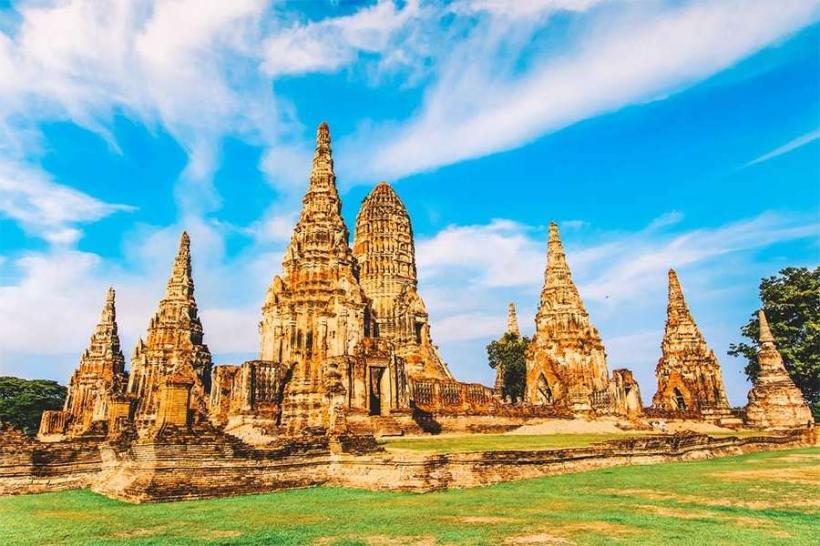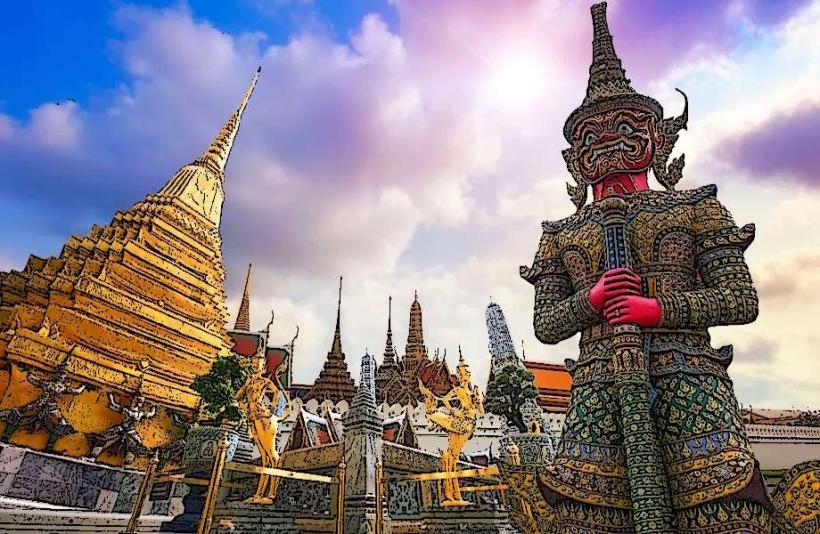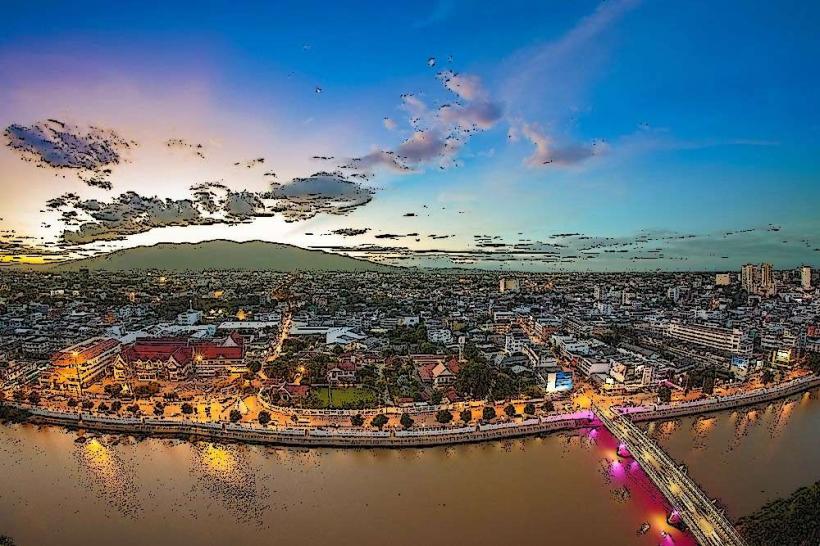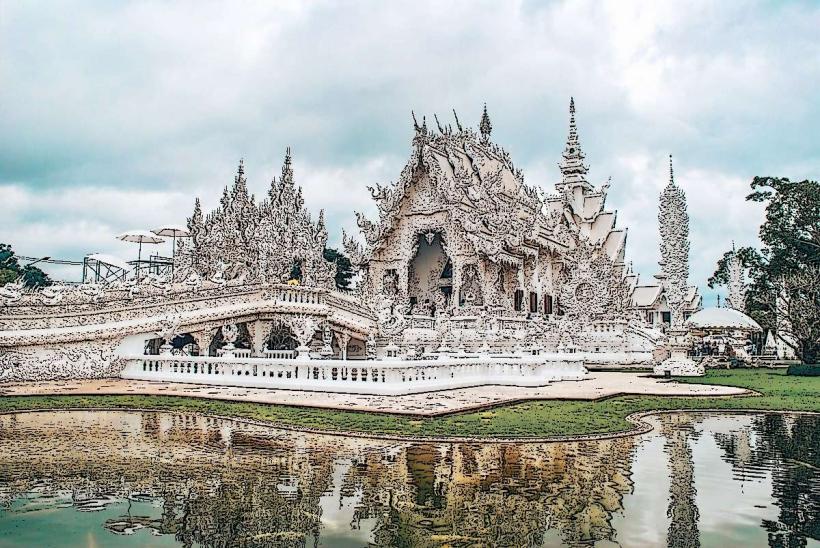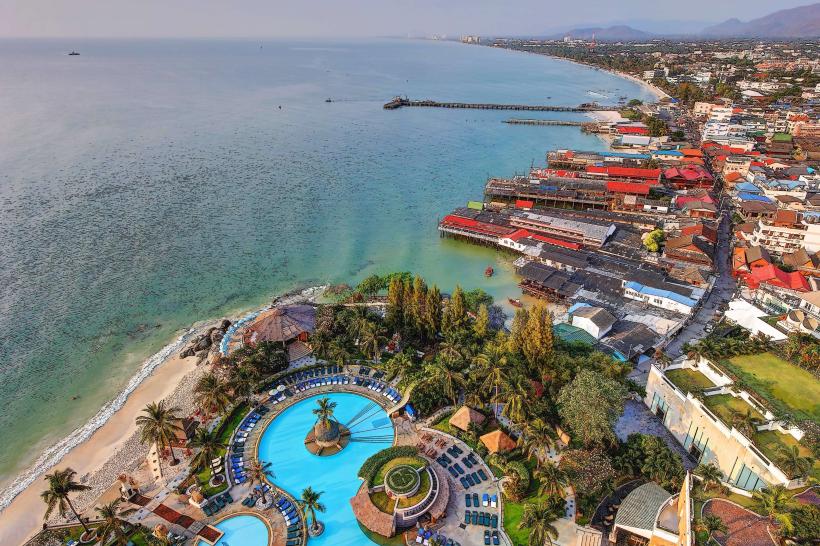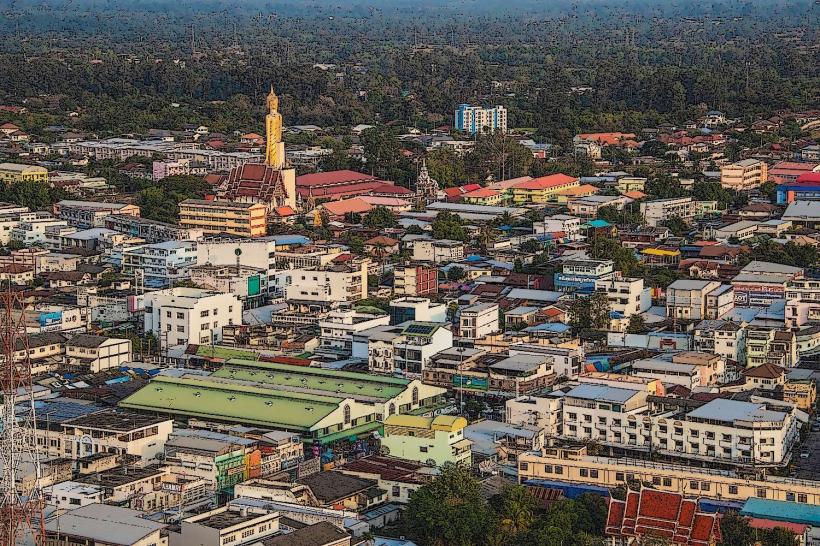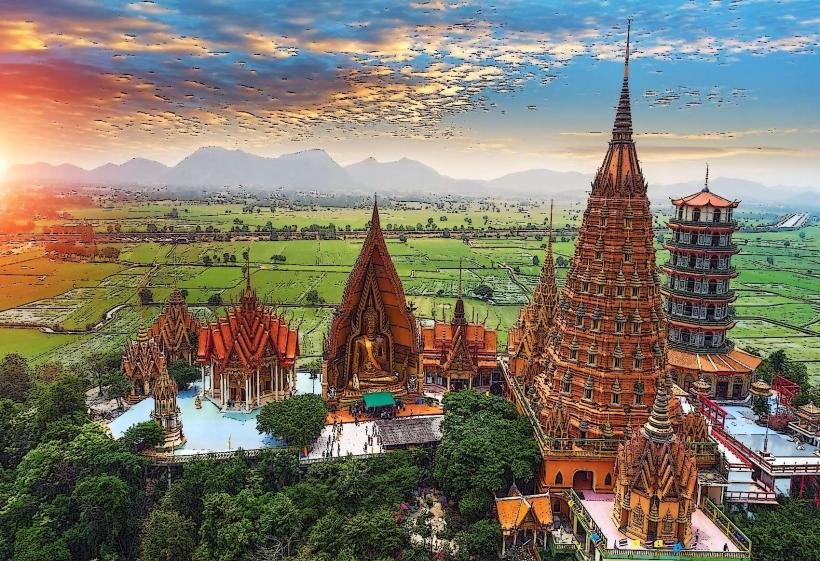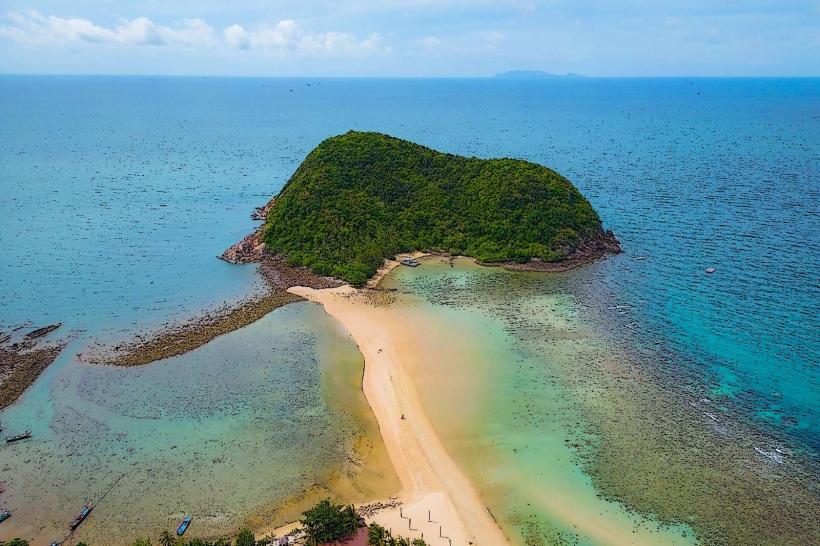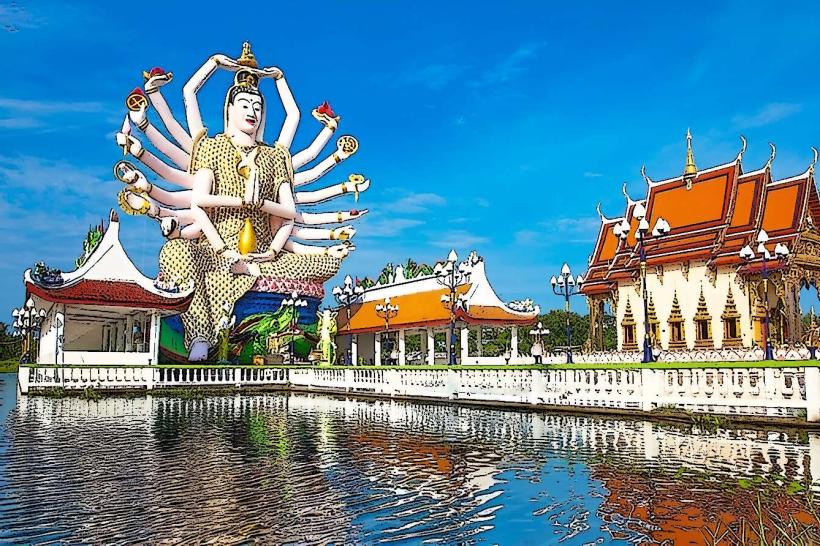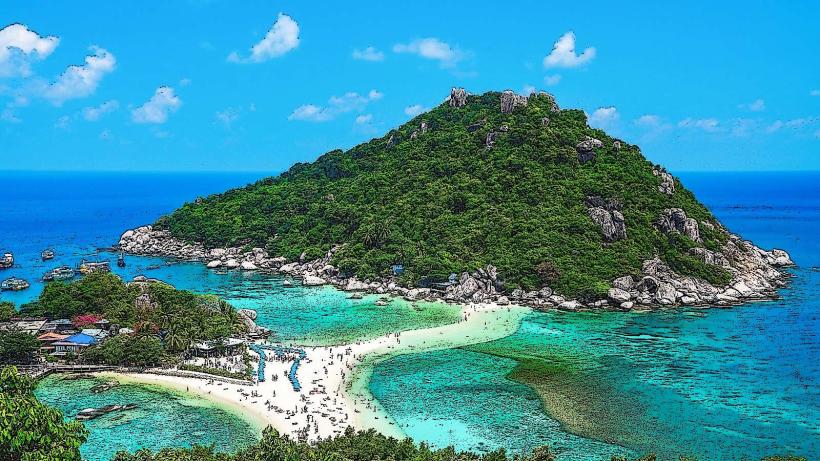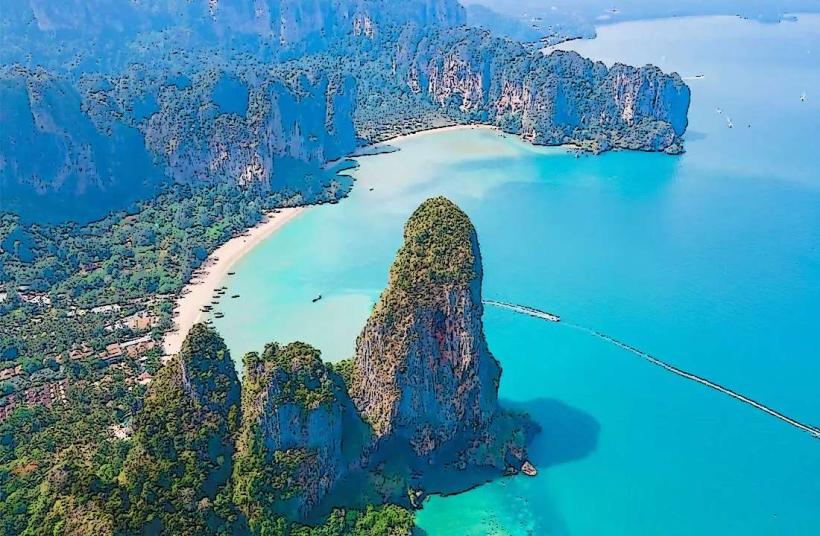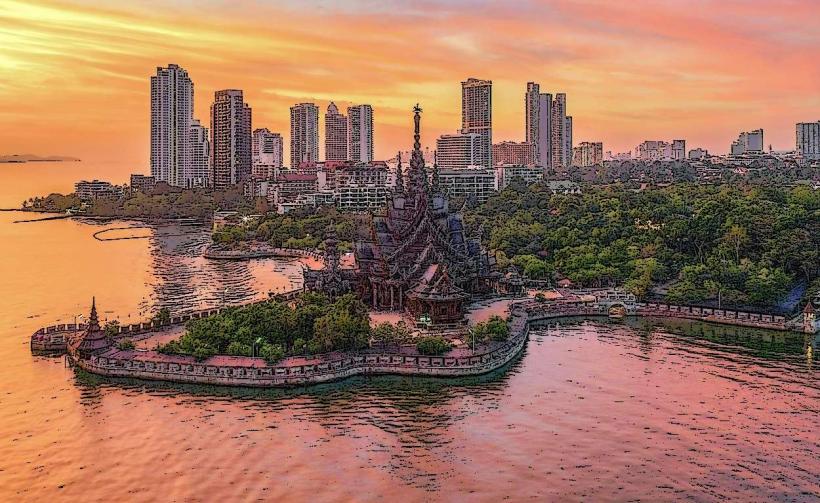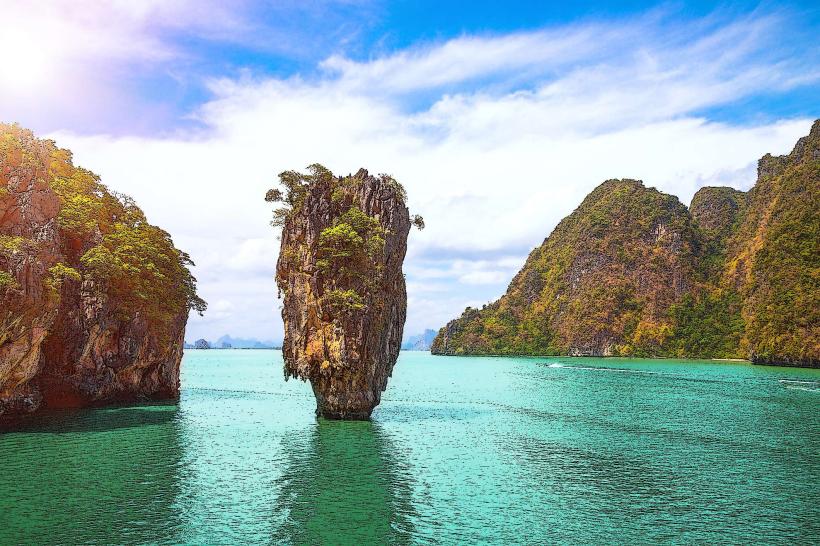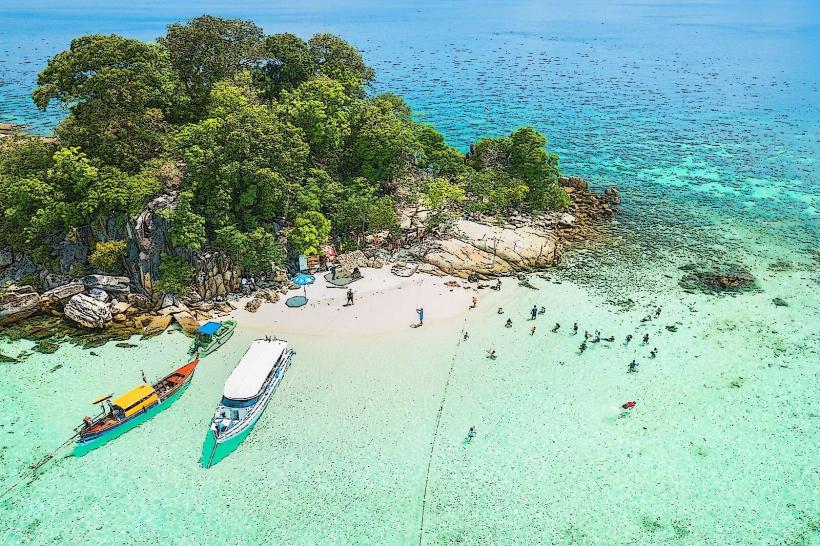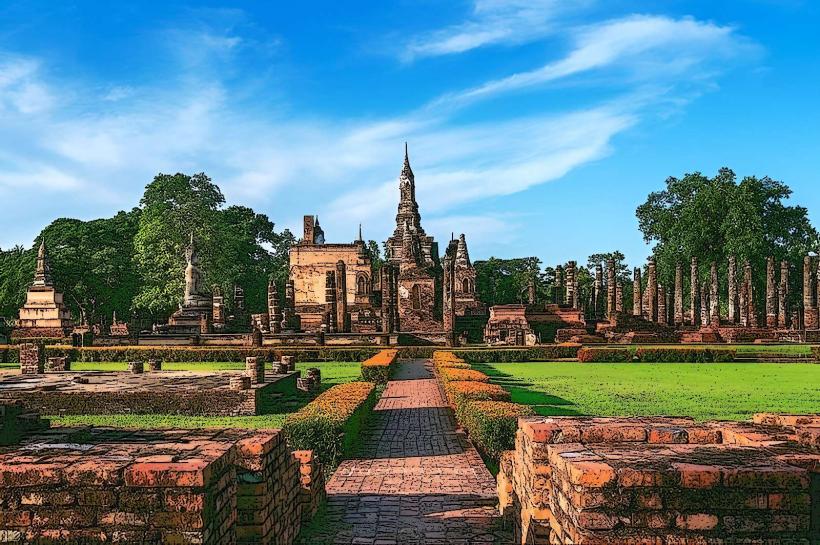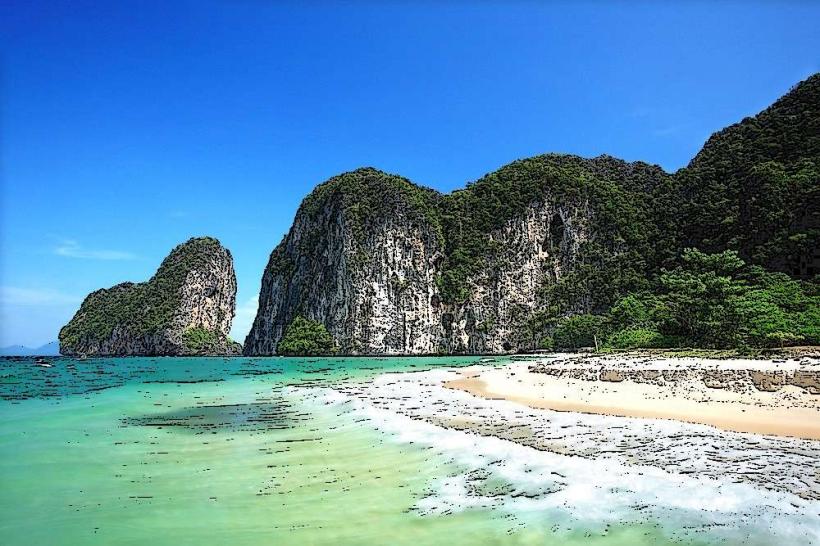Information
Country: ThailandContinent: Asia
Thailand: A Detailed Overview
Thailand, officially known as the Kingdom of Thailand, is a Southeast Asian country renowned for its rich cultural heritage, diverse landscapes, and vibrant economy. It is bordered by Myanmar to the northwest, Laos to the northeast, Cambodia to the southeast, and Malaysia to the south. It also has extensive coastlines along the Andaman Sea and the Gulf of Thailand.
Geography and Climate
Thailand covers an area of approximately 513,120 square kilometers, making it one of the larger countries in the region. The country is divided into several geographic regions, each with its own unique climate and topography.
- Northern Thailand is characterized by rugged mountains, cooler temperatures, and dense forests. This region is home to a mix of ethnic communities and diverse wildlife.
- Northeastern Thailand (Isaan) features a vast plateau with arid conditions, making agriculture challenging but still a key economic activity. This region has a strong cultural identity influenced by neighboring Laos.
- Central Thailand consists of fertile plains and is often referred to as the “Rice Bowl of Asia” due to its vast agricultural production.
- Southern Thailand boasts tropical beaches, dense rainforests, and a warm, humid climate, making it one of the most biologically diverse regions in the country.
Thailand experiences a tropical climate with three main seasons:
- Hot Season (March to June) – High temperatures, often exceeding 40°C in some areas.
- Rainy Season (July to October) – Monsoon rains, with heavy downpours and occasional flooding.
- Cool Season (November to February) – More comfortable temperatures, especially in the north, with drier conditions.
History and Culture
Thailand has a long and complex history, dating back thousands of years. The region has seen the rise and fall of several ancient civilizations, with influences from Indian, Chinese, and Khmer cultures. The country has never been colonized, a unique aspect that has allowed it to maintain its sovereignty and distinct traditions.
The dominant religion is Theravāda Buddhism, practiced by around 95% of the population. Buddhism plays a crucial role in daily life, influencing customs, festivals, and the social structure. Monks are highly respected, and many young men spend time in monastic life as a rite of passage.
The Thai language, written in its own unique script, is the official language. However, many ethnic groups in different regions also speak their own languages or dialects. English is widely spoken in urban areas and among younger generations.
Economy and Industry
Thailand has one of the largest economies in Southeast Asia, driven by several key industries:
- Agriculture – Thailand is one of the world’s leading exporters of rice, rubber, sugarcane, and seafood.
- Manufacturing – The country is a major producer of automobiles, electronics, textiles, and processed food products.
- Tourism – A significant part of the economy, attracting millions of visitors annually due to its rich cultural heritage, scenic beauty, and hospitality.
- Technology and Services – Growing industries, particularly in finance, telecommunications, and e-commerce.
Thailand is a member of ASEAN (Association of Southeast Asian Nations) and has strong trade relationships with China, Japan, the United States, and Europe.
Society and Way of Life
Thai society is known for its hospitality and emphasis on respect. The concept of "sanuk" (having fun) is an important aspect of Thai culture, influencing both work and social interactions. Family ties are strong, and many households include multiple generations living together.
The traditional Thai greeting, the "wai," is a gesture of respect performed by placing hands together in a prayer-like position and bowing slightly. Social hierarchy is significant, with respect given to elders, monks, and people of higher status.
The country has a rich tradition of performing arts, including classical dance, puppetry, and Muay Thai (Thai boxing), which is considered both a sport and an art form. Thai cuisine is internationally renowned, known for its balance of spicy, sour, sweet, and salty flavors. Popular ingredients include rice, noodles, seafood, herbs, and spices.
Transportation and Infrastructure
Thailand has a well-developed transportation network:
- Roads and Highways – The country has an extensive highway system, making travel between cities and provinces convenient.
- Public Transport – Urban centers have buses, taxis, and motorcycle taxis. In Bangkok, there is an MRT (subway) and BTS (skytrain).
- Railway Network – The train system connects different parts of the country, with high-speed rail projects under development.
- Airports – Major international and domestic airports connect Thailand to the rest of the world.
Challenges and Future Outlook
While Thailand has experienced rapid economic growth, it faces several challenges:
- Environmental concerns – Deforestation, pollution, and plastic waste are significant issues.
- Income inequality – There is a noticeable wealth gap between urban and rural areas.
- Political instability – Thailand has experienced political shifts and protests over the years.
- Aging population – As birth rates decline, the country is preparing for an aging society.
Despite these challenges, Thailand remains one of the most dynamic countries in Southeast Asia, with strong economic prospects, a rich cultural identity, and a commitment to modernization while preserving its traditions.

